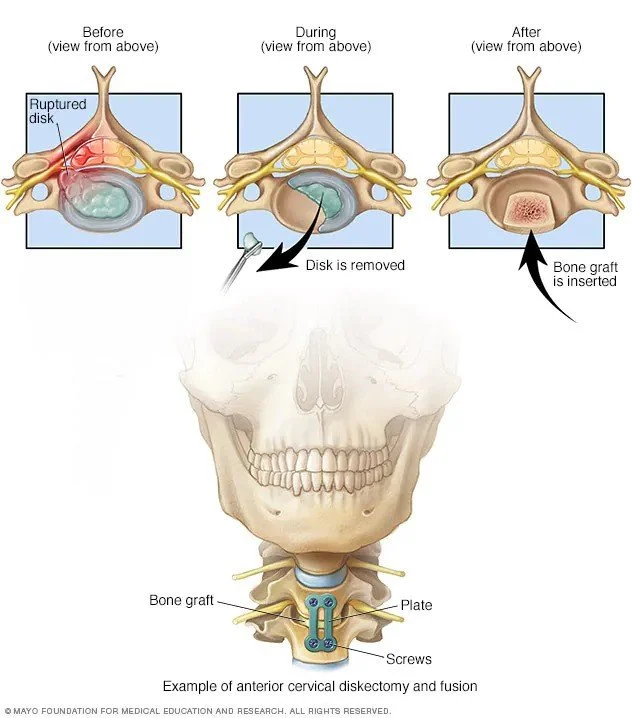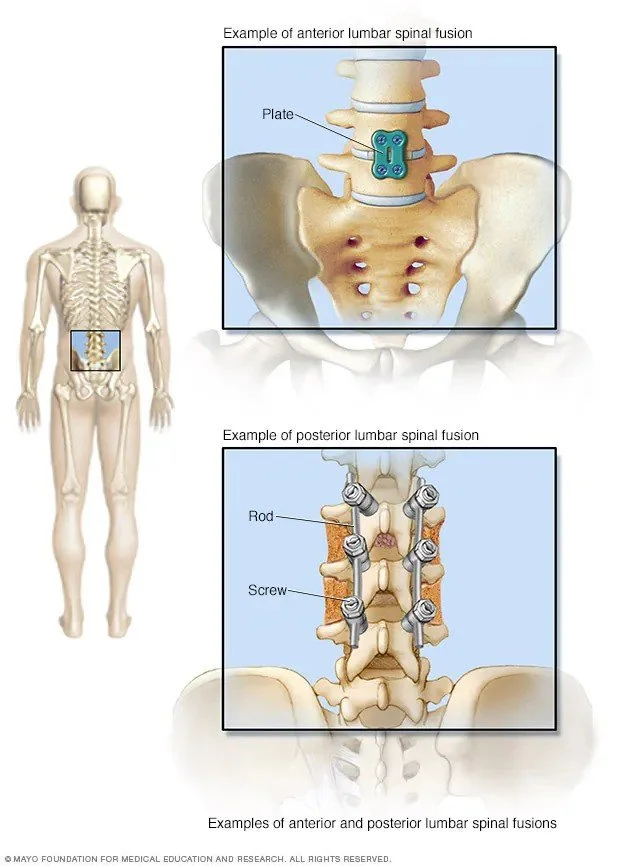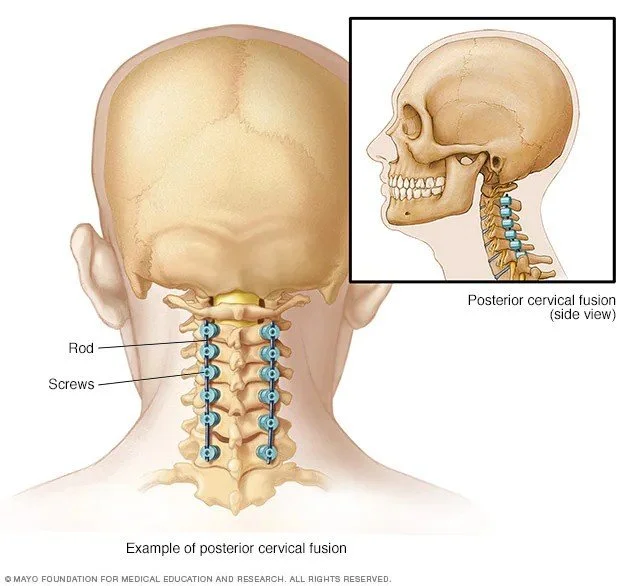Spinal Fusion
Spinal fusion is a surgical procedure performed to join two or more vertebrae in the spine together to create stability, reduce pain, and treat various spinal conditions. It involves the use of bone grafts, metal rods, screws, or other devices to fuse the affected vertebrae, preventing them from moving independently. Here are some key aspects of spinal fusion:
Types of Spinal Fusion:
Posterior Lumbar Interbody Fusion (PLIF): This approach is used to treat lumbar (lower back) spine problems. Surgeons access the spine from the back and remove the disc material, inserting a graft between the vertebrae.
Anterior Lumbar Interbody Fusion (ALIF): This procedure accesses the spine through the front of the body and involves removing the damaged disc and inserting a graft to fuse the vertebrae.
Transforaminal Lumbar Interbody Fusion (TLIF): TLIF is similar to PLIF but approaches the spine from the side. It involves removing the disc and fusing the vertebrae with a graft.
Cervical Fusion: This procedure is used to treat issues in the neck (cervical spine). Depending on the specific condition, surgeons may use an anterior approach (from the front) or a posterior approach (from the back) to perform the fusion.
Posterolateral Fusion: This is a fusion method that involves placing graft material between the transverse processes (small bony projections on the side of each vertebra) to promote fusion.
Common Symptoms That May Indicate the Need for Spinal Fusion:
Chronic back or neck pain
Numbness or weakness in the limbs
Sciatica (pain radiating down the leg)
Scoliosis (abnormal curvature of the spine)
Herniated discs
Spinal stenosis (narrowing of the spinal canal)
Spondylolisthesis (slippage of one vertebra over another)
Degenerative disc disease
Advances in Spinal Fusion: Advances in spinal fusion techniques and technology have led to improved outcomes, reduced complications, and shorter recovery times. Some notable advancements include:
Minimally Invasive Surgery (MIS): MIS techniques use smaller incisions and specialized instruments, resulting in less tissue damage, reduced pain, and quicker recovery compared to traditional open surgery.
Biologics: The use of biologically active substances, such as bone morphogenetic proteins (BMPs) and stem cells, can enhance bone growth and fusion in spinal surgery.
3D Printing: 3D printing technology allows for the creation of customized implants and grafts tailored to a patient's specific anatomy, improving the fusion process.
Robotics: Robotic-assisted surgery can enhance the precision and accuracy of spinal fusion procedures, making them less invasive and more effective.
Improved Implant Materials: Advances in the materials used for rods, screws, and cages have resulted in stronger and more durable implants, reducing the risk of complications.
Navigation Systems: Advanced imaging and navigation systems help surgeons accurately place implants and ensure proper alignment during spinal fusion surgery.
It's important to note that spinal fusion is not always the first or only treatment option for spinal conditions, and its suitability depends on the individual patient's diagnosis and circumstances. Patients should consult with a spine specialist to discuss their symptoms, treatment options, and potential risks and benefits.


